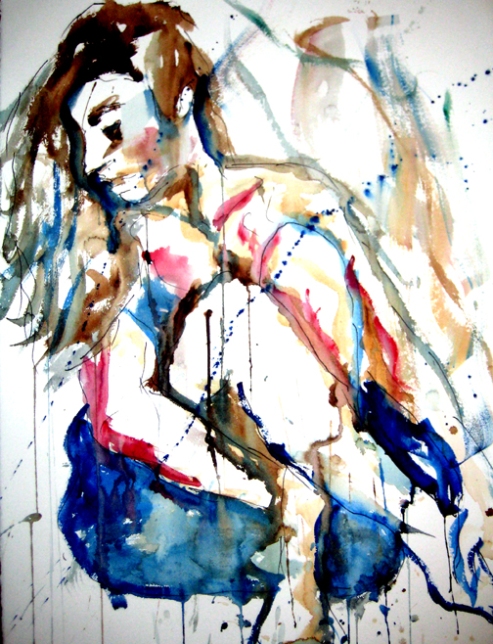9 Points of Interest When Viewing Emotional Art
- Does the artist technically achieve what he or she has intended to do?
Even when focusing on expression, the technical aspects of fine art cannot be ignored. Poor proportion and lack of perspective stands out in all art and identifies the amateur. If this is the artist’s intention, that is ok, but much of the time it isn’t and the artist only stands out as ignorant and untrained. I find that even in Outsider Art (untrained and removed from the art world,) much of the time artists are still able to follow the rules of their styled and not look childish or inexperienced.
2. Does this piece give me a feeling of emotion, positive or negative?
Nearly all fine art is designed to evoke emotion. Cleaver usages of color or line quality are just a couple of ways to achieve this. Typically, popular artists, not in the fine art sector ignore the negative and merely present “feel good” art to reach the mass public. That gets old. It’s like having a radio station that only plays musak. An artist must be aware of all his emotions to explore and create different art at different times.
3. Is the artwork musical?
To achieve a sense of emotion, many artists, such as Kandinsky and Pollack, have resorted to music by creating pieces that are less figurative or clearly nonrepresentational. I personally view colors as notes on a keyboard and shapes and lines as the rhythms. Listening to a certain kind of music while creating can help achieve a melodic tone to my pieces. Just drawing a shoe, for example, can employ great technique, but what does this piece say? Is it a statement about shoes? Just creating a technically strong picture can succeed as fine art, but may not be expressive and I would usually pass that by.
4. Why not accept popular styles of kitsch art?
Just because something is popular doesn’t make it true art. Art designed to appeal to the masses may be at times technically strong, but it often drowns out truly creative art just to satisfy a conservative or politically strong agenda of what art should or has to be. Sadly enough, the mass population is ignorant.
5. Is the style new and different or is this something that has been done before?
Sometimes artists make a statement by creating something that has never been done before. Cubism, by Picasso and Braque or the wild explorations by the abstract expressionists are such examples. Artist, Mark Ryden, a leading artist of the Low Brow or Pop Surreal movement, made great strides in expression. However, he is being copied so much that if I see another artist of this style I’m going to be sick. Follow your heart and don’t always paint in a style just because everybody else is doing it.
6. Can the artist sell you his piece?
This has to do with the personality of the artist. How is he presenting himself? Is he arrogant and overconfident? Does he expect a complex piece to sell himself? Picasso was once asked to explain his work and he said that there is a whole book attached to the story of each piece. If the artist has a story, it often adds to the interest in the art. After all, don’t we all love the tragic Van Gogh story. Movies have been made about the lives of Frida Khalo and Jackson Pollack. Sometimes the lives of the artist seem even more fascinating that the work. Being interviewed often, I find my story of battling a bipolar illness intrigues the audience and adds more attention to my work.
7. Is the artist too confident an unimpressive?
So many untrained artists flower themselves with a notion that they are naturally talented and need no training. I am naturally talented, but I went through extensive training to attain the skill and emotional expression in my work.
8. Do you feel as though you are there when the work was created?
Expressive art is based on capturing experience. As is other forms of art. The artist should be able to convey this experience from subject to painter to viewer.
9. Does the piece give you a further understanding of abstract or modern art?
If the piece is successful, it should show in the interpretation of the viewer as well. As modern music still moves the masses so is emotional art timeless. What is scoffed at or considered unskilled is often a diamond in the rough. The emotional artist is concerned with freezing and preserving a raw emotion.







